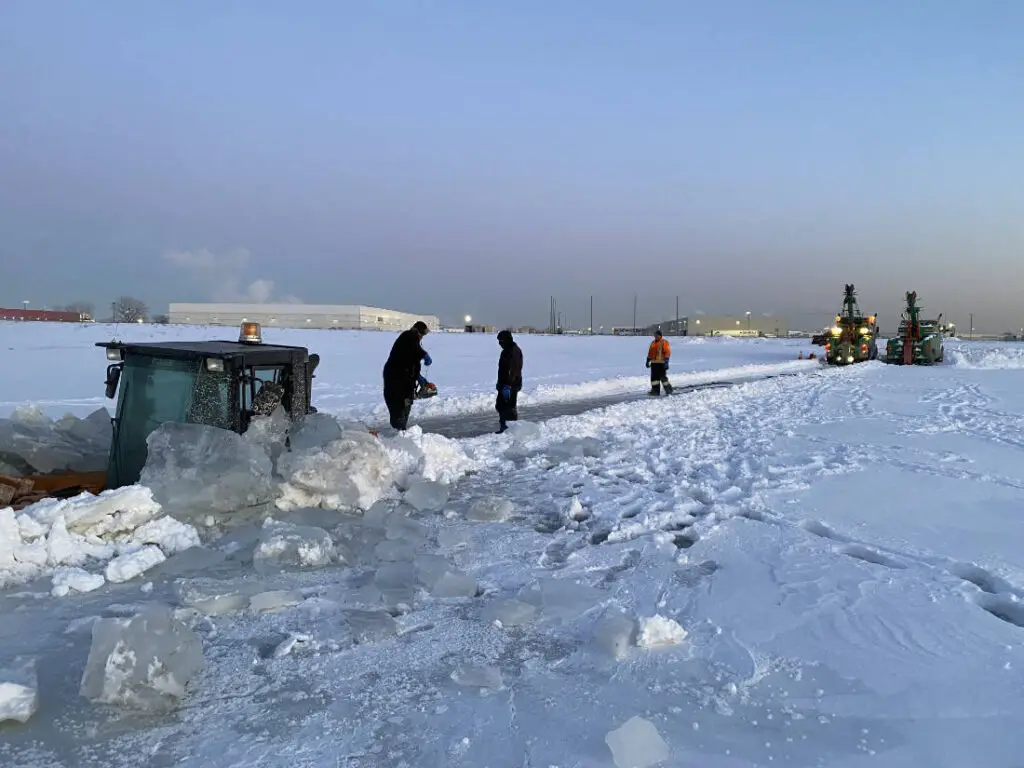When recovering a loader stuck in the ice, the team at Remorquage Météor came up with an innovative idea.
by Iva Kestrankova
Winter conditions in Eastern Canada can be really tough. No one knows this better than tow truck operators when responding to incidents on roads and highways caused by snowstorms and extreme temperatures. Not only do they recover vehicles that have rolled over on black ice, or that have piled up during a blizzard, but they are also exposed to harsh winter weather. And the worse the conditions are, the busier tow truck operators get.
When Serge Landry’s team was called out to an accident scene on the Island of Montreal, Quebec, to pull out a loader stuck in an ice crust, the thermometer read -25 degrees.

Originally published in
Tow Canada, March-April 2022
First, they examined the scene, but because it was already a late night, they decided to hold off with any recovery attempts until the next day to keep everyone safe.
As the team was later told, the piece of open land where the loader broke into the ice is usually free of water, but following heavy rains, a large body of water had formed there and froze when the temperature dropped. By the time the loader operator realized that the ice was cracking under the wheels, it was already too late for him to steer to safety. “Even the next day, when we returned to the scene, he was so anxious that he didn’t want to step onto the ice. He preferred to stay on solid ground,” said Serge, president of Remorquage Météor and a WreckMaster lead instructor.
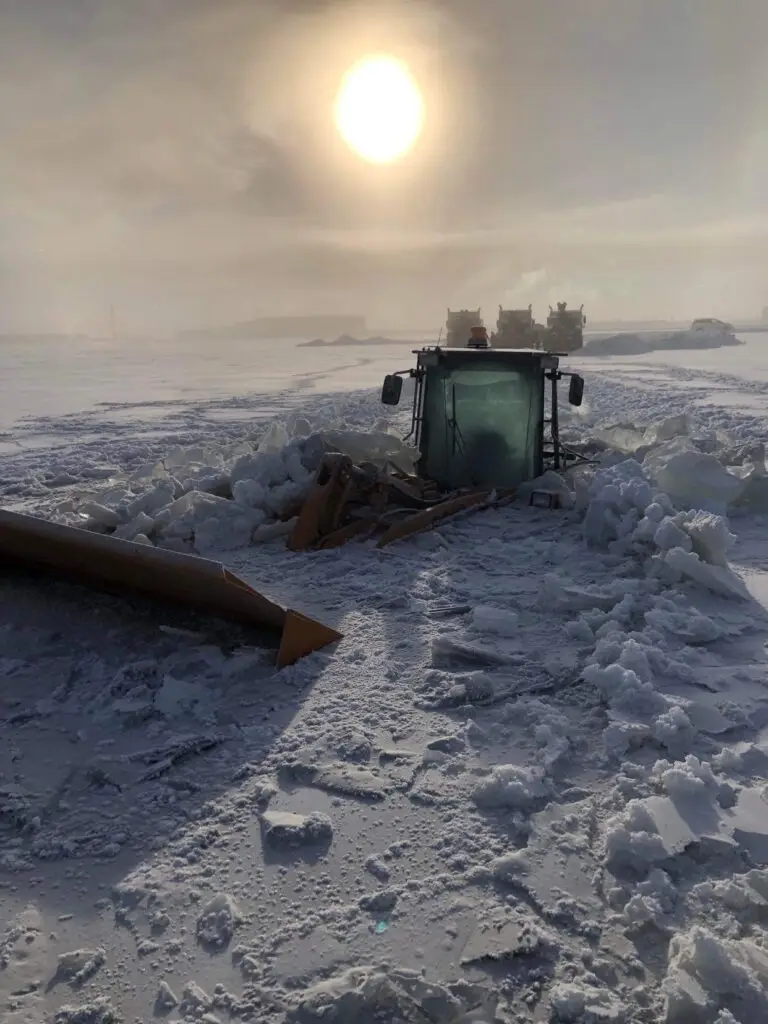
When Serge’s team arrived at the scene in the morning, they cut a hole around the loader to release it from the ice. The initial idea was to pull it out of the water using wire ropes, but due to the insufficient thickness of the ice, the tow trucks had to stay on solid ground, about 185 feet from the semi-sunken loader. This distance made it impossible to winch the vehicle with the required angle.
As the recovery team attempted to pull the 40,000-pound piece of machinery, they soon discovered that it would not move over the ice layer. So, to avoid any further damage, they decided to call it off for the day and come up with a different approach.
Using a crane seemed like an obvious solution. However, to apply sufficient counter-weight, they would need at least a 400-ton crane, and to get one on site in a timely manner would be complicated. Another idea that arose from Serge’s discussion with his fellow operator, Michel Rondeau, of Remorquage Rondeau, was to use a sea container as leverage. “Sometimes you have to think outside the box to find an idea,” said Serge, who was the one coordinating the recovery.
Armed with this novel idea, Serge’s team returned to the recovery scene the next day. Everyone already knew the drill—first they had to cut out the ice around the loader, then, using a flatbed, they positioned the sea container right next to the ice hole with a pair of snatch blocks attached to its top corners. Next, one of the divers on the scene was tasked with securing the wire rope to the loader. However, when he dove into the water, he determined that the loader had partially sunken into soft ground. That made it impossible for the diver to pass the rope underneath the vehicle, so he had to attach it to the rear bumper.
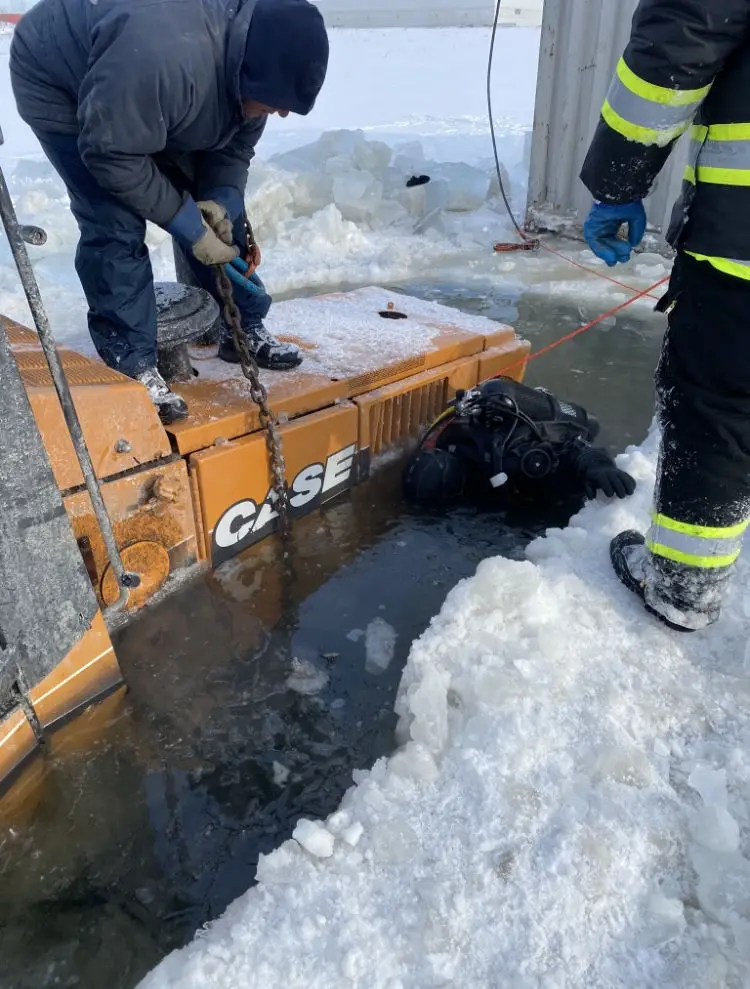
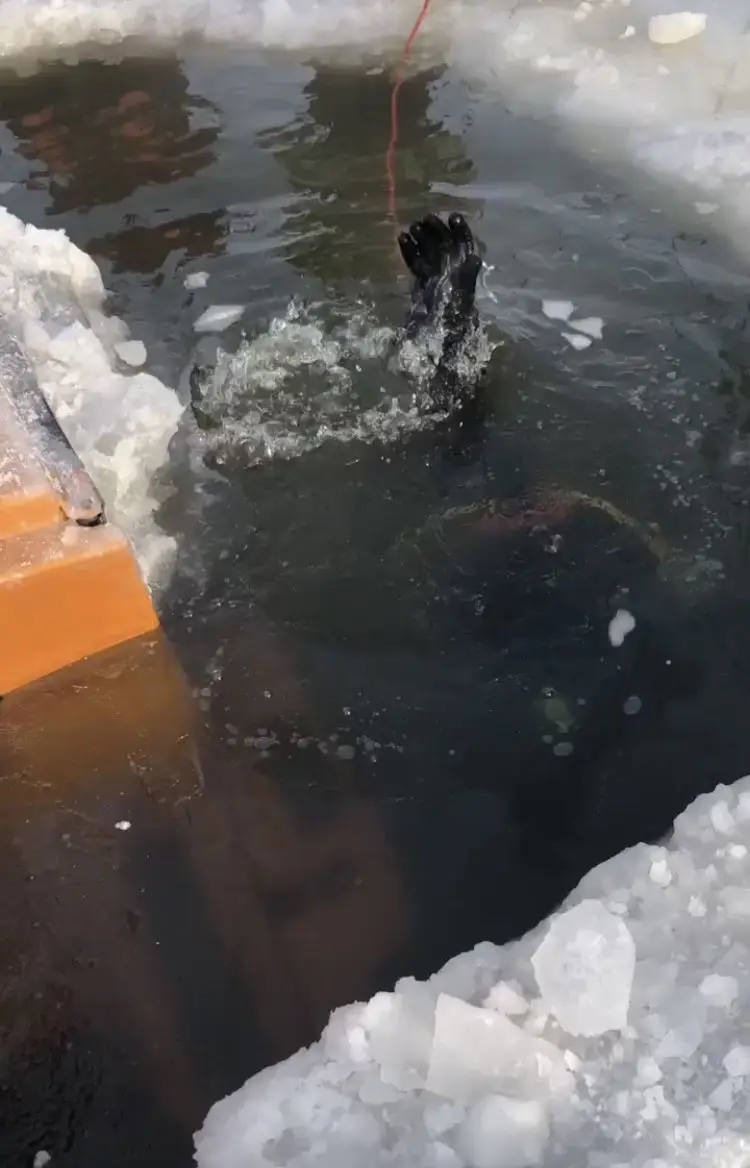
While the outside temperature plummeted to -30 degrees, the water temperature was about 2 degrees, giving the diver only one attempt to attach the wires in the water before his equipment would freeze. This put extra pressure on the rest of the team, because if anything went wrong, such as the rope breaking, the whole recovery would be over for the day. “We had only one shot,” said Serge. Luckily, it all worked well and the team was able to carry on.
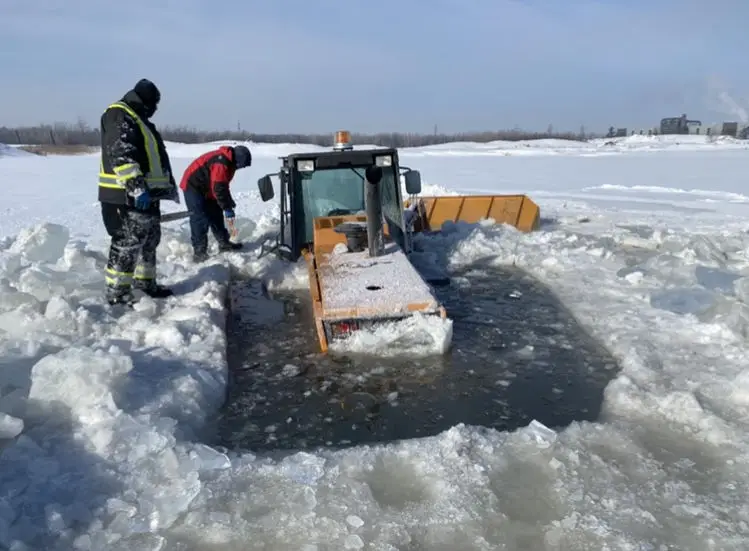
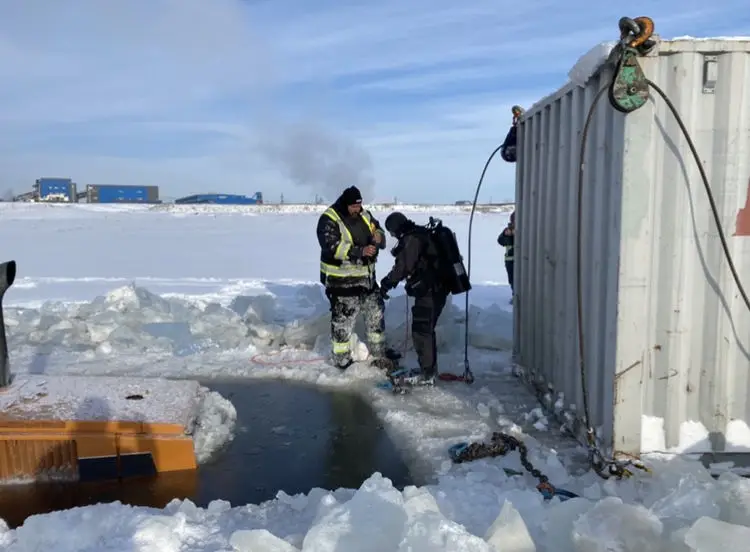
There were three heavy-duty tow trucks on the scene, all of them 40-ton wreckers equipped with NRC composite sliders. They remained a safe distance from the thin ice layer, positioned next to each other in a way that aligned them with the sea container and the loader. “We wanted to make sure that the wire rope would pass beside the container,” said Serge. “We used one tow truck on each side of the container, each [truck] pulling one wire rope attached to the loader and with the snatch block to the container. Then we used one truck in the middle that was pulling back to the ground.”
The operator of the wrecker in the centre coordinated the winching efforts of all three tow trucks. While his truck had to pull the rope constantly to ensure the sea container stayed in the same position, the other two had to winch in unison to ensure they put less pressure on the ice when lifting the loader out of the water.
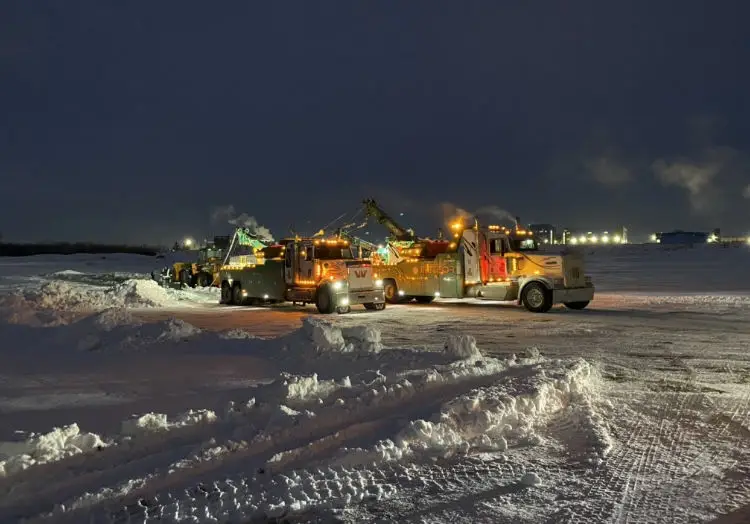
As soon as they started winching, the rear end of the loader lifted up over the ice. In the next phase, trucks on both sides pulled simultaneously to keep the container level and prevent the loader from sliding back into the water. “We were [happily] surprised by the way the container worked,” said Serge.
From start to finish, the recovery that included seven people and three heavy-duty tow trucks took close to 10 hours. After completing the job, Serge shared photos from the day on Facebook. Soon after uploading them, they garnered a lot of attention and sparked curiosity. “I got a lot of comments from people asking how we did it.” That is also one of the reasons he decided to share the full story with Tow Canada readers.

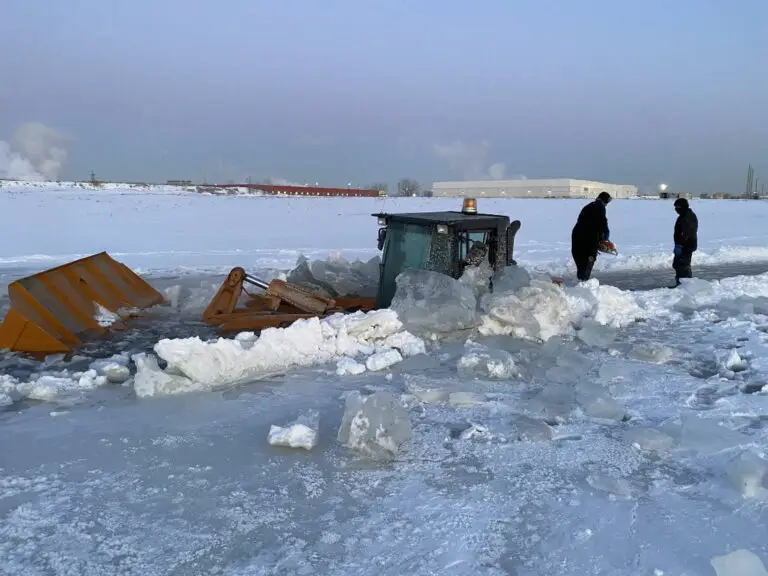
Being creative while using a foundation of knowledge to deal with various situations is an important skill in a tow truck operator’s job. This recovery serves as a great example of thinking outside the box and going beyond. By showing their dedication and professionalism, the team of Remorquage Météor set a great example for the entire industry. Well done!
Photos courtesy of Remorquage Météor
